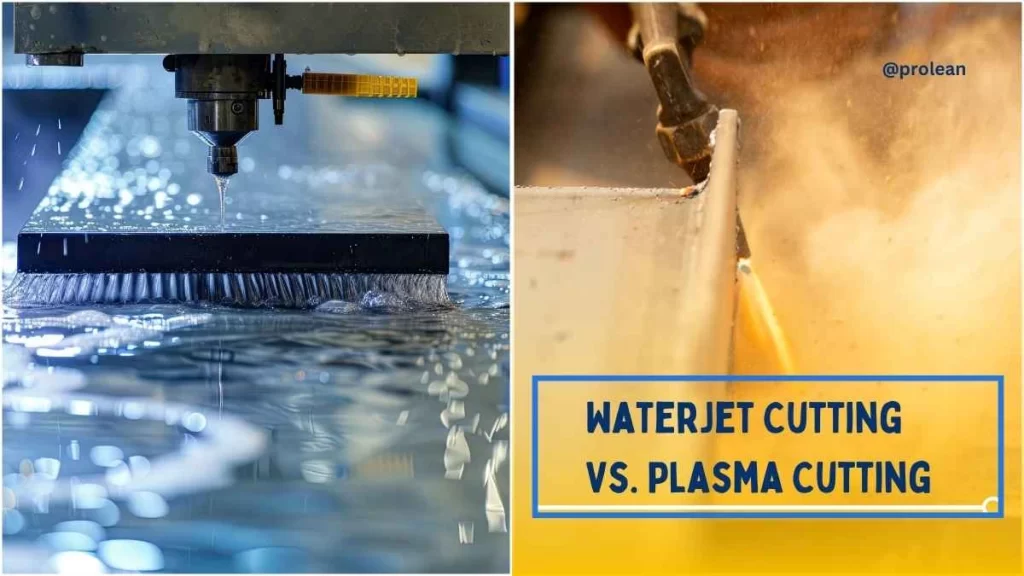
Which one is better for You – Waterjet vs Plasma Cutting? Waterjet and plasma cutting both are used for material fabrication and are significantly distinct from each other by operation, and accomplishments. Moreover, these methods are different based on the materials, the speeds, and the finished output. However, It will aid you in making the right choice once you understand the differences between them.
Water jet cutting vs plasma cutting are two precision cutting techniques. Among these, water jet cutting is notable for materials with fine accuracy, however, plasma is faster on thicker metals. Each process entails separate pros and cons. So, read on to learn which one of the options will best suit your needs.
Waterjet Cutting: A High-Precision Technique
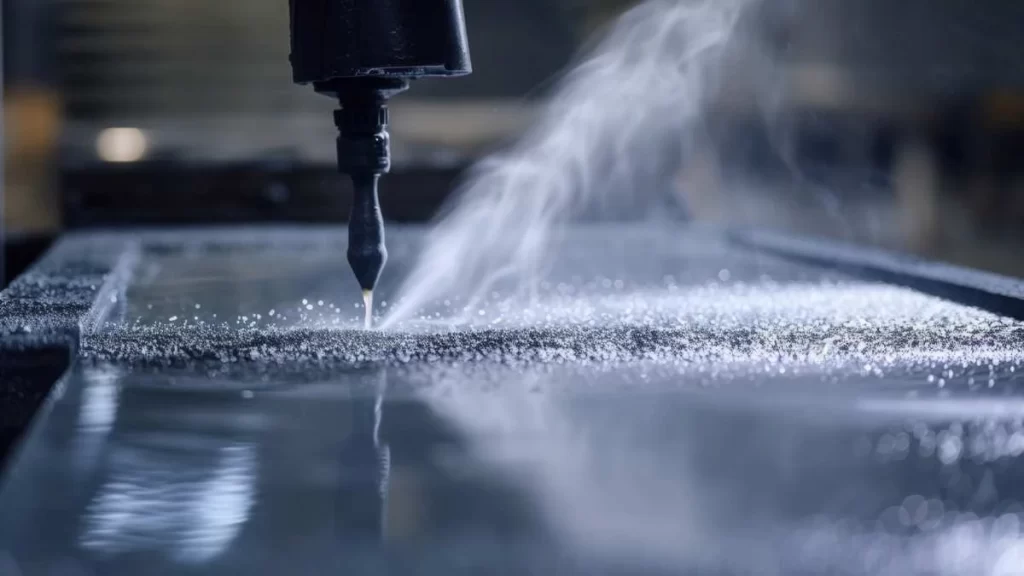
Waterjet Cutting
How does water jet cutting work? CNC Waterjet cutting involves a high-pressure water stream to cut through several Ingredients. It uses water pressure that typically ranges from extremely high and can cut even metal, plastics, and ceramic materials.
In addition, you can apply it on almost any material, ranging from foam and paper to high-strength metals like titanium and materials like granite.
Soft materials are applied with only water and without any chemical components. That is why manufacturers also pronounced it as water-only cutting.
For cutting highly rigid, and hard-to-cut or tough materials, the water is mixed with an abrasive, which maximizes the cutting potential as understood in abrasive waterjet cutting. Abrasive jet cutting works with the abrasive streaming into the nozzle is assumed to be an accurate process. However, the water-only cutting process is also possible with water jet systems when abrasives are not needed.
The technology was first introduced in the 1930s. The subsequent developments have been made over time. Now, it’s saying that a precision water jet cutter can trim materials at thrice the speed of sound.
Try Prolean Now!
Advantages of Using Waterjet Cutting
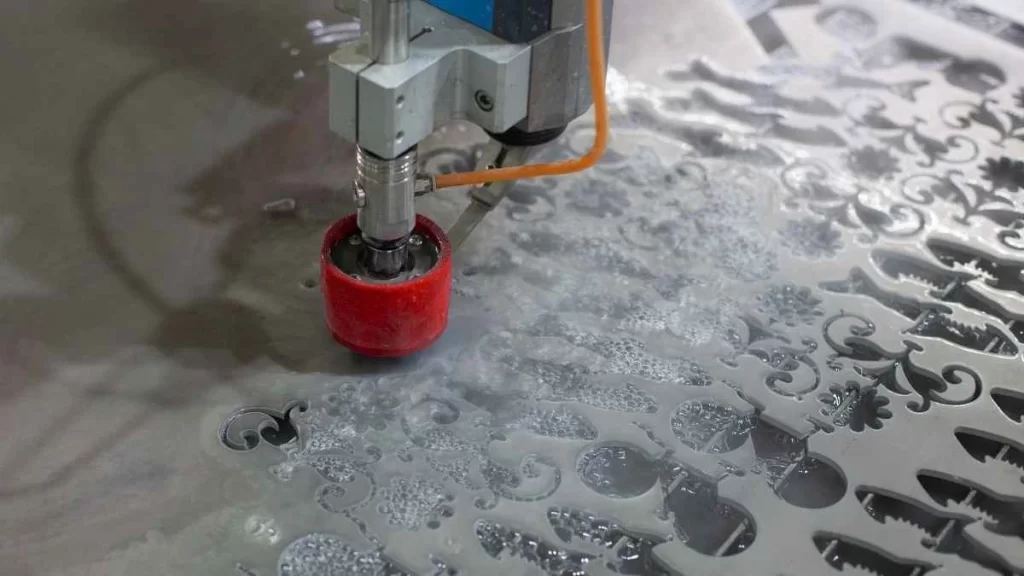
Precision Waterjet Cutting Sheet
In general, the water jet cutting service has several benefits. Most prominently, the cutting tool does not touch the material in operation. As a result, it reduces heat generation, which is unlike what appears to be a challenge in plasma. The intended feature makes waterjet cutting more optimal for materials with low tolerance to temperature, such as conductive metals.
Plasma Cutting System: A High-Energy Alternative
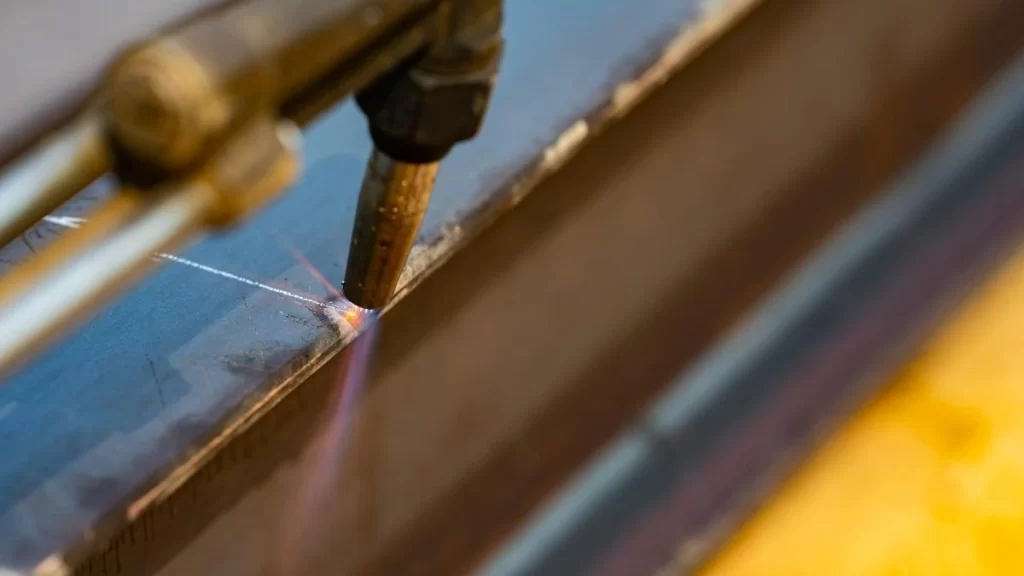
Plasma Cutting
Plasma Cutting may seem similar to waterjet cutting, but it involves using high-pressure gas. Manufacturers also defined it as the ‘Four-point Probe Method’. It is relatively more complicated than waterjet cutting and limitedly applies to conductive materials only.
Plasma cutting involves using a gas that has been ionized forming a circuit between the gas jet and the workpiece. The gas heats the material where the cutting is to be done, and the heat liquefies the metal which is then forced away by the gas stream.
As for plasma arc cutting technology, it appeared in the 1960s, which also makes it a younger technology than waterjet cutting.
Advantages of Plasma Cutting
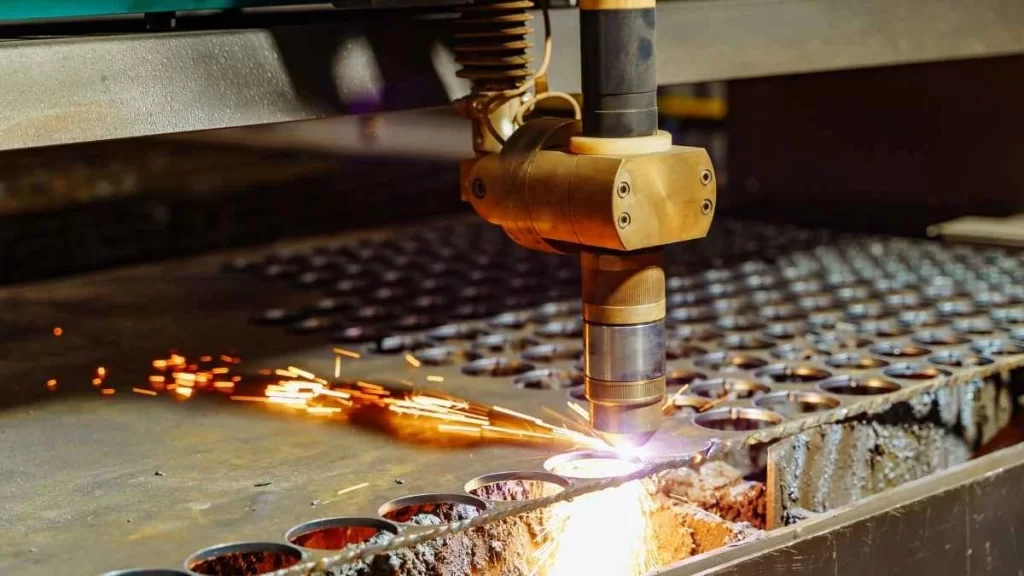
Plasma Cutting Holes
Originally, plasma cutting service was considered expensive and cumbersome but due to technological advancements, it has greatly been cut down. Currently, the handheld plasma cutter can be bought for $300, and CNC plasmas cost between $15,000 and $300,000.
WaterJet Vs Plasma Cutting – Which Technology Reigns Supreme?
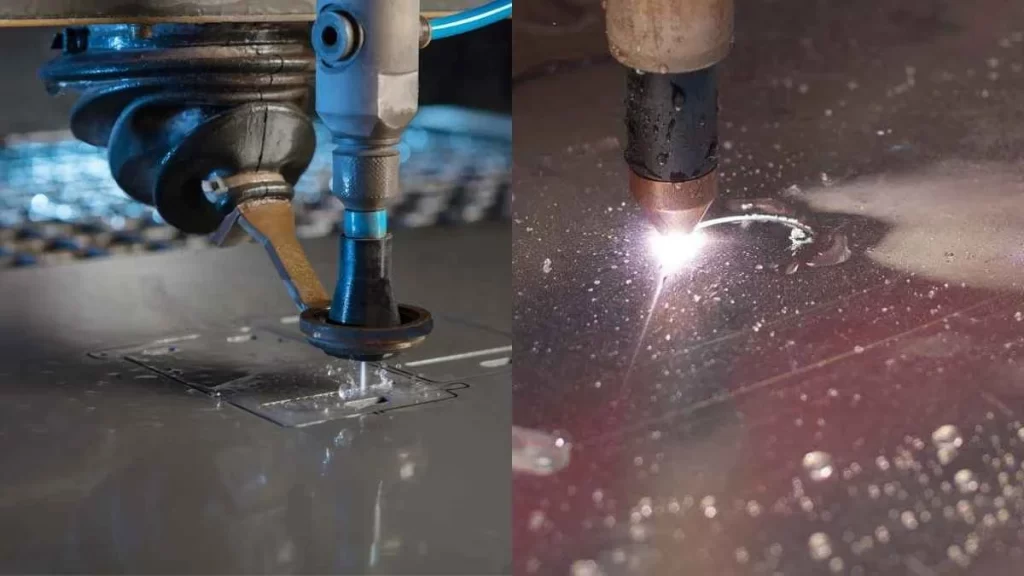
WaterJet Vs Plasma Cutting
If you are looking for a metal-cutting project, both are preferred choices. However, each process has its pros and cons, and knowing them will help you make the right choice in the process scope.
Let’s take a closer look at the key factors that influence which cutting technology is superior:
- Initial Costs
How much does plasma cutting cost? In particular, plasma cutters are usually cheaper than other similar devices for many hobbyists. Industrial-quality CNC plasma cutters are available for between $50,000 and $100,000.
However, the waterjet cutting cost is higher than since they require a water pump with high pressure. These machines cost anything from $100,000 to $ 350,000 approximately. So, with the more expensive equipment in terms of initial investment costs, plasma cutting is affordable for a start.
- Operating Costs
Plasma cutting is relatively cheaper to operate, with electricity, gases, and consumables averaging $15 per hour. In comparison, waterjet cutting costs $30 an hour, primarily for the abrasives used on more difficult materials.
Therefore, plasma cutting can be cheaper for big projects if you compare the prices of the many projects.
- Lifespan of Consumables
The limited factor of plasma cutters dictates that it demands constant replacement of consumables like nozzle. These parts may only survive a few hours before going to replacement.
Waterjet cutters, however, give the edge of having longer-lasting parts. Depending on the usage, the nozzle life is approximately 100 hours while the life of the pressure pumps can be about 10000 hours.
Therefore, you should be in a position to find a solution that will allow you to spend less on maintenance and cutting tool replacement. So, here, waterjet cutting is the way to go.
- Material Flexibility
Plasma cutting is mainly used on hard and electrical conductivity materials like steel, aluminum, and brass. However, water jet cutting is more flexible and can work on metals, plastics, rubber, wood, and granite. They provide more versatility if you cut through different materials; thus, waterjet cutters are better.
- Cutting Speed
Plasma cutting is a rapid cutting process. It can carve metals at a speed of up to 200 inches per minute. However, it has been discovered to be faster than waterjet cutting, approximately 15 inches per minute. If speed is a critical aspect of your project, then plasma cutting should be the option to take.
- Maximum Cutting Thickness
Heavy-duty plasma cutters are capable of cutting through to 6 inches of thickness, which is perfect for most applications. But waterjet cutters have the edge here. It can also sever much thicker materials — up to 18 inches of metal and even 100 feet of materials such as stone or coal. Therefore, if you are planning to cut through thick materials then water jet cutting is the most effective.
- Accuracy and Precision Demand
With plasma cutting, the cutting precision is approximately 0.015 inches. Nevertheless, waterjet cutting is more accurate, with a dimensional accuracy of ±0.001 inch. So, waterjet cuts are much more precise and produce even better edges, especially when cutting complex geometries and patterns.
- Stress at Material During Cutting
In plasma cutting the material is melted by incorporating intense heat, and it may cause distortion/warping in the material. On the other hand waterjet cutting does not produce any heat and the work being cut will not be exposed to thermal stress. If you are dealing with materials that will react with heat, then waterjet cutting is advisable.
- Heat-affected Zone
Plasma cutting produces a zone adjacent to the cut where the temperature and chemical properties of the metal are altered due to the cutting process. Waterjet cutting avoids this issue completely, as it doesn’t generate heat, preserving the material integrity.
- Secondary Finishing
Plasma cutting operates at high temperatures. You may have to perform other augmenting procedures such as fine grinding to improve edges. While, waterjet cutting makes clean and neat cuts that do not have to be sanded, ground, or polished in any way. So, you can save time and costs as it’s easier for the edges to be prepared to be used as soon as they come from the cutter.
- Energy Consumption
Plasma cutting is highly energy-intensive. The cut must be made using high-pressure gas and a powerful electric arc, which will lead to high energy consumption. However, waterjet cutting just needs a water pump with high pressure, which means that waterjet cutting saves much more energy.
Moreover, plasma-cutting machines can consume more than twice the energy used in waterjet cutting systems, providing a clear edge to waterjet cutting.
- Applications
Plasma cutting is restricted to electrically conducting materials such as thick steel. The majority of plasma cutters are applied for fabrication, construction of industrial facilities, and other similar purposes.
Waterjet cutting, on the other hand, is a viable option as it can cut through just about any material with accuracy. So, it makes it useful for the aerospace, and mining industries.
- Maintenance
Plasma cutting is relatively easy to maintain. However, the nozzle gets damaged each time the cutter is in use, and the electrodes are supposed to be replaced frequently.
The waterjet cutting also has no complicated parts and is easy to maintain. In addition, it does not suffer the wear and tear associated with constant starting and stopping. As a result, waterjet cuts costs in terms of future maintenance.
- Safety
Plasma cutting calls for correct safety training and personal protection gear such as safety glasses are necessary for the eyes.
Still, waterjet cutting is much safer. There are no high temperatures or open electric currents involved. The equipment normally consists of a water bed to control pressure and in general, the risk associated with waterjet cutters is relatively low.
Alternatively, if you are interested in safer operations and have concerns for the welfare of your employees then using waterjet cutting is safer.
Try Prolean Now!
Quick Comparison: Waterjet vs Plasma vs Laser Cutting Technologies
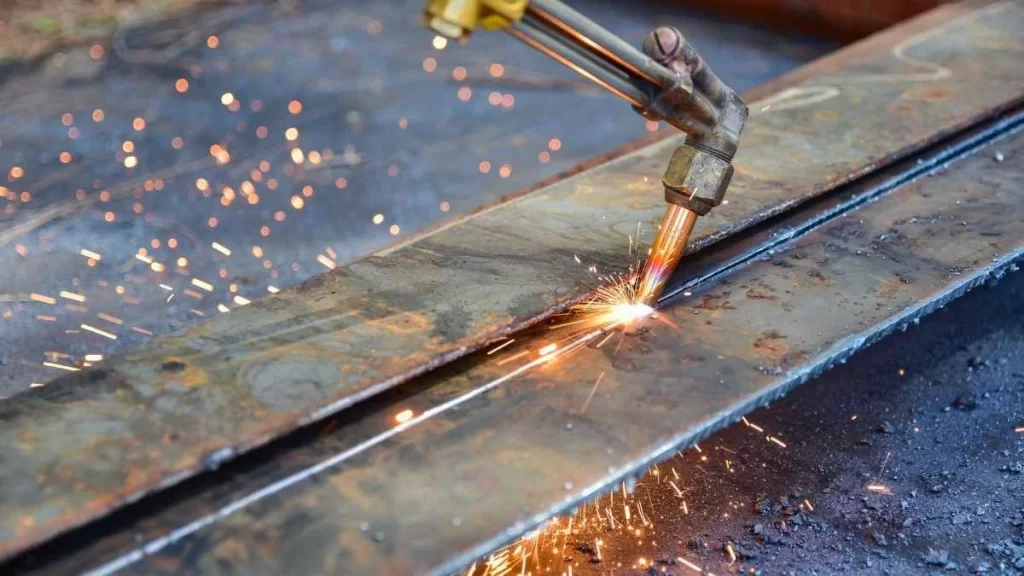
Laser Cutting
Alt Text: The image shows a laser cutting machine in operation, using a focused laser beam to cut through a metal sheet with high precision.
The table below provides a detailed side-by-side comparison of laser cutting and waterjet cutting vs plasma cutting. This comparison covers various aspects to help you determine which cutting technology is most useful for your needs.
| Factor | Waterjet Cutters (WC) | Plasma Cutters (PC) | Laser Cutters (LC) | Winner |
| Upfront Costs | Expensive | Cheaper> waterjet cutters | High | ✓ PC |
| Running Costs |
Higher running costs due to expensive abrasives ($30 per hour) |
Lower running costs ($15 per hour) | Low | ✓ LC |
| Lifespan | Parts can last for thousands of hours | Parts wear out faster | Parts last longer but are expensive to replace | ✓ WC |
| Range of Materials | Supports almost all materials except for diamond and tempered glass | Supports only metals | Wide, but less versatile than waterjet | ✓ WC |
| Cutting Speed & Productivity | Lower cutting speed (around 15 inches per minute) | Higher cutting speed (over 60 inches per minute) | Very fast, up to 150 inches per minute | ✓ LC |
| Maximum Thickness of Material | 18 inches (specialized cutters can cut up to 100 inches in mining operations) | 6 inches | Up to 1 inch for metals, thinner for non-metals | ✓ WC |
| Cutting Tolerance & Accuracy (lower is better) | 0.001, very accurate and high-precision cuts | 0.015, less accurate and lower precision cuts | 0.01-0.05, very high precision cuts | ✓ WC |
| Cutting Precision | Very high | Moderate | High | ✓ WC |
| Kerf Width | 0.6 mm | 3.8 mm | 0.4 mm | ✓ LC |
| Material Range | Wide | Narrow | Wide | ✓ WC |
| Cutting Speed (Thin) | Moderate | Very fast | Very fast | ✓ LC |
| Cutting Speed (Thick) | Slow | Fast | Moderate | ✓ PC |
| Operating Cost | High | Low | Low | ✓ LC |
| Machine Cost | High | Low | High | ✓ PC |
Related To: Laser Vs Plasma Cutting
Note: In the above table, the indications refer to;
PC – Plasma Cutting
LC- Laser Cutting
WC-Waterjet Cutting
When to Opt For Waterjet Cutting Rather Than Plasma Cutting?
Waterjet cutting is perfect if accuracy and cut edge are your project priority. The method also comes with a high precision degree with a very low tolerance; making its cutting ability precise. While plasma cutting will leave the material edges rough, water cutting is precise and leaves a smooth edge, up to industry standard.
Moreover, water jet cutting is more favorable for environmental aspects when compared to other machining means. It also works in the reduce reuse and recycle paradigm of using water and metals in the painting process.
In addition, It is ideal for use on heat-sensitive materials such as rubber and plastics. Since you do not have to employ temperatures, and there are no heat-affected areas. Waterjet cutting performs best with hard, non-conductive materials such as Granite which cannot be melted.
WaterJet Vs Plasma Cutting: When Should You Choose Plasma Cutting Instead?
Plasma cutting is preferable for minimum time-required projects and at less expense. It provides the possibility to cut materials at high speeds: up to 200 inches per minute.
Relative to water jet cutting, plasma cutting has a less initial and operational cost. Besides, plasma cutting is applicable in underwater operations. More often it proves to be more convenient if you are concerned about speed and cost.
Choosing The Appropriate One for Your Accurate Cutting of Parts
So, what’s your verdict on the waterjet vs plasma cutting debate? After understanding the pros and differences between the two methods as well as their basic mechanisms, compatible materials, and costs, the decision as to which technique is right for your precision cut parts ought to be easier to make.
Are you ready to produce the best precision-cut parts at the most competitive price? Why take unnecessary risks when you can rely on Prolean Tech, your trusted partner in cutting-edge manufacturing? We focus on several specific cutting services which include water, laser, and plasma cutting.
Our qualified engineers guarantee that every component is created to the highest professional quality. Simply upload your design files to our platform, and you’ll receive a rapid quotation along with a free DFM (Design for Manufacturability) analysis report.
So, don’t wait— Contact ProleanTech Experts today for your precision-cut parts.
Try Prolean Now!
FAQ’s – Waterjet Vs Plasma Cutting
Q1. Which is better, a water jet or a plasma cutter?
It depends on your needs. Waterjet cutters are convenient for high precision. These can easily cut a range of materials (including metals, plastics, wood, and stone) with minimal heat distortion. Plasma cutters are faster and more reasonable for cutting metals, especially thicker ones.
Q2. What are the disadvantages of waterjet?
The main disadvantage of waterjet cutting is its slower cutting speed compared to plasma or laser cutting, especially on thicker materials. It also has higher operational costs due to abrasives use.
Q3. What cannot be cut by waterjet?
Waterjet cutters cannot effectively cut diamonds, tempered glass, or some other very hard materials that do not respond well to the waterjet’s pressure.
Q4. What are the disadvantages of a plasma cutter?
Plasma cutting has limited material compatibility (only conductive metals), produces heat-affected zones that can distort the material, and often requires secondary finishing to improve cut edges.
Q5. Can a water jet cutter cut a diamond?
No, waterjet cutters cannot cut diamonds because diamonds are too hard and dense for the abrasive waterjet process to penetrate easily.

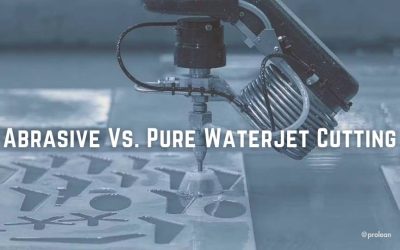
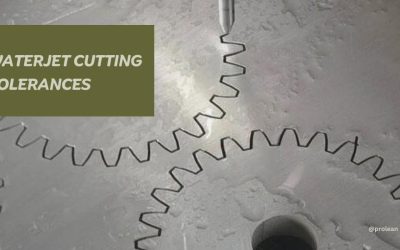
0 Comments